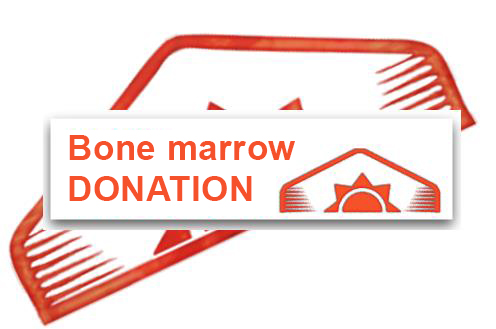World Marrow Donor Day will be celebrated on 15 September
Spain records 380,000 bone marrow donors in first seven months of 2018, up 12% on last year
News - 2018.9.14
Spain continues to demonstrate its generosity in terms of becoming a bone marrow donor. At 31 July 2018, Spain had close on 380,000 bone marrow donors, a year-on-year increase of 12% (at the same date last year).
Data from the ONT-REDMO (Spanish Register of Bone Marrow Donors of the Spanish National Transplant Organisation) list 40,128 new donors registered by the regional governments between 31 July 2017 and 31 July 2018. Of these, 18,775 were registered in the first seven months of this year after the National Bone Marrow Plan (PNMO) was refocused on a commitment made at the start of the year to attract young donors under the age of 40.
Scientific evidence shows that younger donors are those that provide the best results and are therefore more in demand by experts when a donation is necessary. Between 1 January and 31 July 2018, 2,682 people registered as a new donor each month. This is an increase of 90 bone marrow donors per day.
As regards the donor profile, the average age of new donors in 2018 stands at 32.
67% of new donors are women, while 33% are men. However, this proportion is reversed when examining the figures on actual donations - 67% are from men and 33% are from women. In light of this figure, experts advocate encouraging bone marrow donation among young men.
So far this year, the ONT-REDMO has registered 115 effective donations. By the end of 2018, the ONT expects to record close on 200 effective donations. This compares with a figure of 146 last year.
In collaboration with the regional governments, the ONT launched the first stage of its PNMO in January 2013. The initial goal of reaching 200,000 donors in four years was achieved far ahead of schedule, so the second stage of the plan was launched in 2015 with a goal of adding 40,000 new donors per year up to 400,000 donors by the end of 2020. Spain will foreseeably surpass this figure by the end of 2018, two years ahead of schedule.
The ONT recognises the significant effort made by the regional governments to achieve these results, from both an economic point of view and in terms of human resources. Since its launch, the PNMO has received funding from both the Spanish Central Government and the various regional governments, which jointly paid for the cost of typing. To develop this plan, the Ministry of Health, Consumption and Social Welfare has allocated close on 5 million euros over the last six years since 2013 (830,000 euros per year).
Year-on-year increase
The total number of donors has risen from 337,635 registered at the end of July 2017 to 377,763 at the same date this year. Of those, almost half were registered in the first seven months of 2018.
Although year-on-year increases have been posted in all autonomous regions, the best results in this period were posted by Castile-La Mancha (up 35%), the Canary Islands (up 25%), Galicia (up 21%), Extremadura (up 18%) and Madrid (up 16%). The Autonomous City of Melilla also posted excellent results (up 22%).
In absolute terms, the regions posting the highest year-on-year increases were in order, Andalusia, Madrid, Castile-La Mancha and Valencia.
The ONT-REDMO has chosen to publish these data to coincide with World Marrow Donor Day, which will be held on Saturday, with various events being organised by patient associations throughout the country to pay tribute to bone marrow donors around the world.
The organisations involved in the National Bone Marrow Plan (ONT-REDMO, the regional governments, the Josep Carreras International Foundation, the Spanish Association of Haematology and Haemotherapy, and patient associations), congratulate the people of Spain on this achievement and encourage them to find out more about the importance of this type of donation and to continue donating bone marrow.
About bone marrow transplantation
The ONT-REDMO stresses the importance of bone marrow donation and underlines the following:
- Healthy young people between 18 and 40 are ideal bone marrow donors according to scientific evidence.
- Acute leukaemia, lymphoma and multiple myeloma are the main diseases that can benefit from a bone marrow transplant.
- At present, over 32 million people worldwide are already bone marrow donors. This figure is joined by over 750,000 units of umbilical cord blood (UCB) in storage around the world. Spain holds 9% of all global UCB reserves, with over 65,000 cords stored at public banks.
- According to data from the ONT-REDMO and the Spanish Association of Haematology and Haemotherapy (Spanish acronym: SEHH), the probability of finding a bone marrow donor either in Spain or on the world register currently stands at 90%.
- In 2017, the average time it took to find a compatible donor stood at 32 days.
Non official translation





